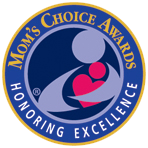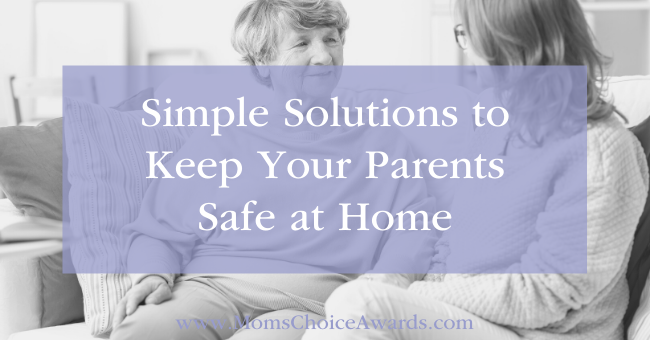 Spencer Harris
Spencer Harris
Blogger
It’s hard to be apart from your loved ones during the best of times, but in uncertain times that distance leads to worry, concern, guilt – and stress! During the COVID-19 crisis you may be removed from aging parents by geographical distance or you may be struggling with checking on them while caring for kids at home from school and partner who may be showing symptoms and looming unemployment and financial strife. It’s also hard to know if you’re helping or potentially hurting them by visiting and unwittingly exposing them to this virulent virus.
Now is the perfect time for seniors and their adult children to discuss the varying technologies that make aging in place safer than ever. Below are three tools to consider and discuss.
Medical Alert Systems:
Gone are the days of “I’ve fallen and I can’t get up”. Units now are fashionable, they can be worn as necklaces, bracelets or even watches. The new generation of medic-alert systems do more than alert one central location. They alert multiple rescue agencies, friends, neighbors, family depending on your wishes. They can detect carbon dioxide, fire and are a resource to report suspicious activities like burglars, unknown persons approaching your home. Most have fall detectors, GPS for elderly people who still drive, walk, hike or get out and about and the services, and ranges have expanded immensely.
Reasons to Have A Medical Alert System
The fear of falling or suffering any medical emergency is certainly the primary motivator, but not the only reason to consider getting a medical alert system. Medical alert systems assist in other types of emergency help, as well. If a fire breaks out, the device can contact the fire department. Some systems even monitor for fire, smoke or carbon monoxide. A push of the button will alert the police of a suspected break-in or other suspicious activity. Some mobile devices come with GPS tracking. Other medical alerts can also track activity through motion detectors and beacons. This would allow someone to know something is wrong or if the user has been in one place for an unusual amount of time.
- Features to Look For
When choosing your device, there are some features you will want to consider: - Risk-Free Trial
A risk-free trial will allow you to test one or more devices at home and choose the one you’re most comfortable with. - Water-Resistant or Waterproof
It’s best to look for a device that is 100 percent waterproof or at the very least, water-resistant so, you can wear it in the shower or bath. - Long Battery Life
Most systems and devices have a battery life that will last a week or up to a month before needing to be recharged – do your research to find out the average battery life of the system. - Signal Range
Medical alert systems either operate through a landline or cellular service. A landline service operates through your traditional telephone line covering a range up to 1,000 feet. A better bet would be cellular coverage which should work anywhere there is cell service. - Live Assistance Availability
It does you no good if you have a monitored medical alert and no one answers when you call. Look for a monitored service who has medically trained representatives available 24 hours a day, seven days a week, 365 days a year. - Fall Detection
As mentioned, many monitored and non-monitored systems come with fall detection. Technology allows the device to automatically detect if you fall. It will call for help without you having to do anything. - GPS Tracking
GPS tracking is a great technological advance that is offered on many medical alert systems. It can pinpoint your location and make it easier for someone to find you.
For further information about medical alert systems, including who should consider them and unbiased reviews of the most popular systems visit AginginPlace.org.
Medication Minders
According to the Centers for Disease Control (CDC) up to 50 percent of prescribed medications are taken incorrectly.
Medication management doesn’t have to be hit-or-miss. “Smart” medication management devices can be set to open at certain times when certain medications are needed.
Devices like PillPack, Reminder Rosie, Pillo have voice recognition software that can tell you about the medications you’re taking and listen to your commands. They can also be connected to your phone or computer. This is all in the name of making the process of taking medication safer, quicker, and easier.
Key components to look for include:
- Voice Recognition
A nice value-add is a unit that can understand and answer your questions. - Automatic Refills
Some services allow the user to avoid having to go to pharmacies for refills. Simply upload your RX and they will send your refills to your home. - Alert Volumes and Reminders
Make sure the volume and type of alert will be heard and acknowledged by the user. Also, research how often it reminds the user they need to take their medicine should they fail to do so with the first alert. - Drug Interaction Checker
Most pill trackers notify users of dangerous drug interactions, food and alcohol’s damaging effects. - Prescription Refill Reminder
A reminder to refill prescriptions can be just as vital as a reminder to take the medication.
Telehealth/Telemedicine
Systems like Grandcare, Curavi and Vivify Health have created a suite of services track things such as daily activity and your health information in real-time (heart rate, weight, glucose level, blood pressure, oxygen) and uploads this information to a safe website where your long-distance caregiver can access it.
You can also make specifications as to when you should receive alerts say, “alert me when mom doesn’t go for her daily walk” and so on. The interesting thing about this device is that it comes with many other features such as Facebook to connect with your loved ones, video games to challenge your brain, and music to relax you.
These systems can be customized to an individual’s needs/desires but some things you may want to include are:
- Touchscreen
This system will only be used if it is easy to do so. Make sure there is one, touchscreen hub that operates all tools. - Medication Management
Most units come with varying types of medication reminders – be sure to choose one that is user friendly. - Social Media
Services include, email with family members, access to online social media, games or local news. - Caregiver Alerts
Receive alerts if you forget to take medicine or upload wellness readings. - Wireless Transmitters
Make sure your system can upload readings from wireless devices like blood pressure or blood glucose monitors.
Technology isn’t just for the young – technology has advanced in ways that can truly help people live safer, more fulfilling lives. In fact, almost no population benefits more from user-friendly technology than senior citizens.
The Pew Research Center reports four-in-ten seniors now own smartphones, more than double the number in 2013. Once the stigma or fear of not being tech savvy is overcome, seniors could age in place more safely and their loved ones could enjoy greater piece of mind and connection with their elders.
Times like these really do help people take stock of what is needed in their life (who knew we all needed soooo much toilet paper?!?) and perhaps discover things they have overlooked. This may be the perfect inspiration to increase safety measures for your aging parents – not just for now but for the future. The next crisis might be a storm, hurricane, injury if we’ve learned anything – we never really know what the future holds. Take this time to discuss these options with your folks – now while you have some time at home, research solutions online and visit some in-home visits – maybe take a day or two to familiarize your parents or loved ones with their new technologies. Be well.
 About Spencer Harris
About Spencer Harris
Spencer Harris is a content contributor for AgingInPlace.org. He has spent the last 20+ years researching and writing about aging and family issues. He is driven to educate seniors, their families and care providers about the latest discoveries and innovations that make aging in place a safe and fulfilling option. He and his dog Harley are aging in place in northern Michigan.
View all posts by Spencer Harris here.
Save







7 Comments on “Simple Solutions to Keep Your Parents Safe at Home”
I do agree with these simple solutions, being aware of what might happen to our elders is something we should consider especially if they’re living with us. Being responsible and proactive can help them a lot of everyday. Thanks for sharing this, will let my friends and relatives read this too!
Thanks for the feedback!
I have been looking at different medical alert services for my mother and have been pleasantly surprised at the different options, rates and peace of mind they offer.
Technology is amazing in this day and age. We can do so much more than we dreamed when we were young and parents and grandparents are not as clueless as the younger generation often thinks. They may need some help getting on board, but once they are there; they can handle it just fine. Face-timing, texting, technical medical alerts and monitoring is strange to everyone with their first exposure. I always remember that we are more alike then different and helping others learn the benefits of tech through knowledge is a win-win for everyone.
Great ideas. I keep in touch with parents by phone to check on them every couple days.
AMAZING BLOG…SHARE SOME MORE BLOGS
I love all the tips. As an adult who lives with inlaws, I appreciate this so much. We are currently using zoom to keep in touch with my parents. Technology is really the best way to keep in touch and make sure everyone is safe and healthy.